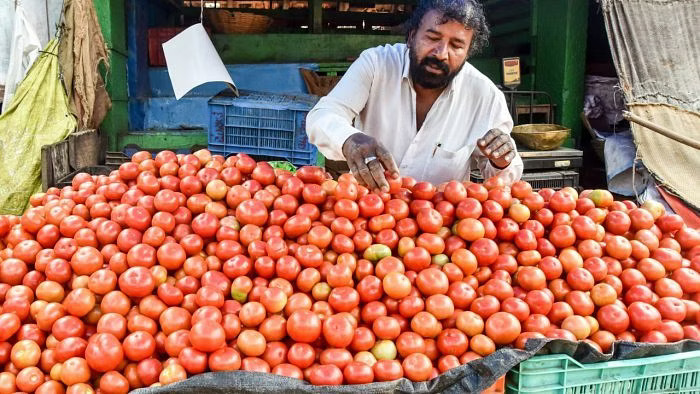The state of Karnataka is currently grappling with fluctuating tomato prices, a situation that has significant implications for both consumers and farmers. The unpredictable price variations have raised concerns about affordability, agricultural practices, and the stability of the tomato market.
Tomatoes, a staple ingredient in Indian cuisine, are a crucial component of countless dishes and hold a special place in the country’s culinary culture. However, recent price fluctuations have caused distress among consumers who are grappling with the impact on their household budgets.
According to reports, the wholesale and retail prices of tomatoes in various parts of Karnataka have witnessed significant fluctuations in recent weeks. Factors such as changes in weather conditions, transportation challenges, and supply-demand dynamics have contributed to this volatility.
Farmers, on the other hand, are facing a different set of challenges. While high prices may provide temporary relief, they can also be indicative of supply shortages, potentially resulting in lower yields for growers. Conversely, when prices plummet, farmers bear the brunt of reduced profitability, impacting their livelihoods.
The government of Karnataka is monitoring the situation closely and has assured consumers and farmers that efforts are being made to stabilize tomato prices. Officials have acknowledged the importance of addressing both ends of the supply chain to ensure that farmers receive fair compensation for their produce while also making essential commodities accessible to consumers.
Experts in the agricultural sector emphasize the need for mechanisms that facilitate stable prices while safeguarding the interests of farmers and consumers alike. Initiatives such as crop diversification, improved storage facilities, and efficient transportation networks are seen as potential solutions to mitigate price fluctuations.
The situation highlights the intricate web of factors that influence the cost of everyday commodities and the broader challenges faced by the agricultural sector. Addressing these challenges requires a multi-faceted approach that involves collaboration between government agencies, farmers, traders, and consumers.
As Karnataka navigates the complexities of tomato price fluctuations, the situation serves as a reminder of the importance of a resilient and balanced agricultural ecosystem that takes into account the needs of all stakeholders. Finding sustainable solutions to mitigate the impact of price volatility will be crucial in ensuring the stability of both markets and the livelihoods of farmers.










